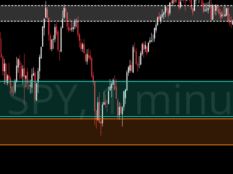What are options?
Options are financial derivatives that give the holder the right, but not the obligation, to buy or sell an underlying asset at a specified price on or before a certain date. Options trading can be a powerful tool for managing risk and maximizing returns, but it can also be complex and carries the potential for significant losses.
There are two main types of options: call options and put options. A call option gives the holder the right to buy the underlying asset, while a put option gives the holder the right to sell the underlying asset. The price at which the holder has the right to buy or sell the underlying asset is known as the strike price. The date on which the option expires is known as the expiration date.
Options can be traded on a variety of underlying assets, including stocks, indices, currencies, and commodities. Options are traded on exchanges or over-the-counter (OTC), and the value of an option is determined by a number of factors, including the underlying asset's price, the strike price, the expiration date, and the option's implied volatility.

Options Spreads
An options spread is a combination of two or more options positions that have different strike prices and/or expiration dates. There are many different types of options spreads, including vertical spreads, horizontal spreads, diagonal spreads, and calendar spreads.
Vertical spreads involve options with the same expiration date but different strike prices. A bullish vertical spread involves buying a call option with a lower strike price and selling a call option with a higher strike price. A bearish vertical spread involves buying a put option with a higher strike price and selling a put option with a lower strike price.
Diagonal spreads involve options with different strike prices and different expiration dates. A bullish diagonal spread involves buying a call option with a lower strike price and a longer expiration date, and selling a call option with a higher strike price and a shorter expiration date. A bearish diagonal spread involves buying a put option with a higher strike price and a shorter expiration date, and selling a put option with a lower strike price and a longer expiration date.
Calendar spreads, also known as time spreads, involve options with the same underlying asset but different expiration dates. A call calendar spread involves buying a call option with a longer expiration date and selling a call option with a shorter expiration date. A put calendar spread involves buying a put option with a longer expiration date and selling a put option with a shorter expiration date.
The Greeks
The greeks are a set of statistical measures used to quantify the risk and reward of options positions. The four main greeks are delta, gamma, theta, and vega.
Delta measures the sensitivity of an option's price to changes in the price of the underlying asset. A call option with a delta of 0.5 will increase in value by $0.50 for every $1 increase in the price of the underlying asset. A put option with a delta of -0.5 will decrease in value by $0.50 for every $1 increase in the price of the underlying asset.
Gamma measures the rate of change of an option's delta. A high gamma means that an option's delta will change significantly for small changes in the price of the underlying asset.
Theta measures the sensitivity of an option's price to the passage of time. As the expiration date of an option approaches, the option will lose value due to the time decay.
Vega measures the sensitivity of an option's price to changes in the implied volatility of the underlying asset. A high vega means that an option's price will change significantly for small changes in the implied volatility.
In conclusion,
Options trading can be a valuable tool for managing risk and maximizing returns, but it is important to have a thorough understanding of the complexities and potential risks involved. It is always a good idea to seek the advice of a financial professional and to have a solid risk management strategy in place before starting to trade options. As with any form of investing, it is important to carefully consider your goals, risk tolerance, and financial situation before making any decisions.



